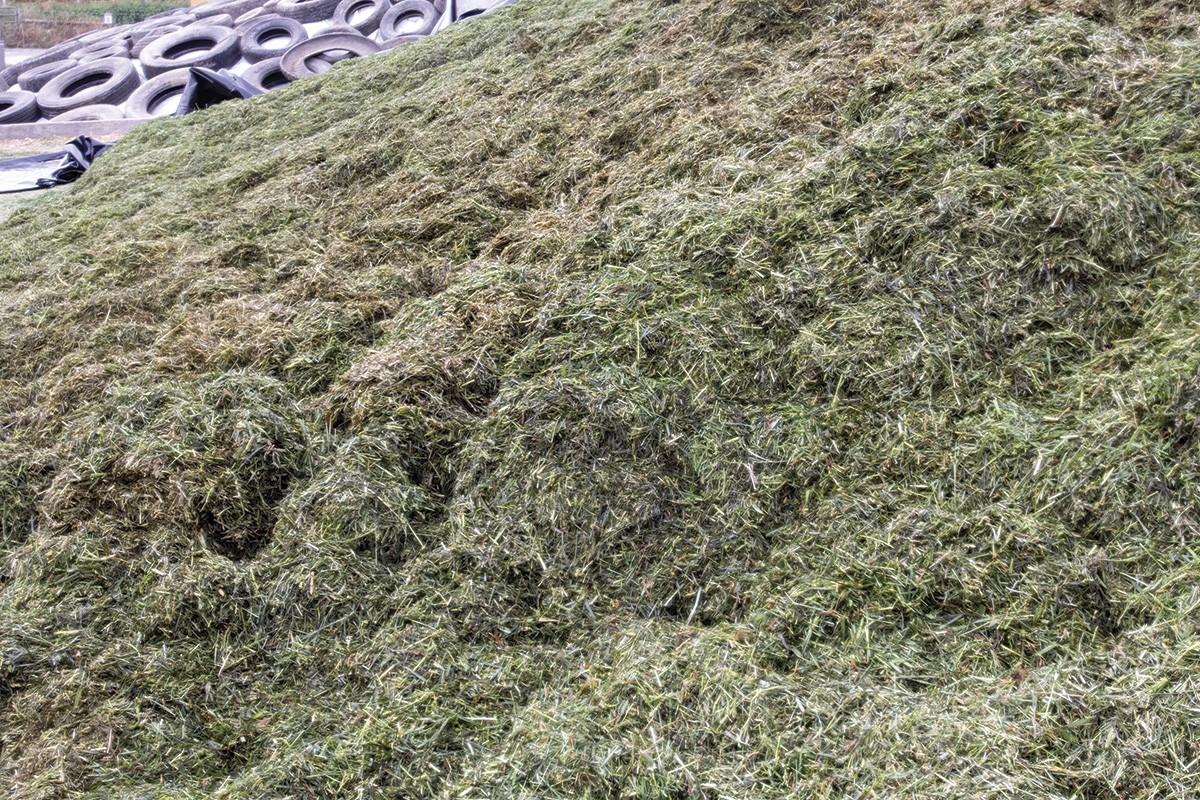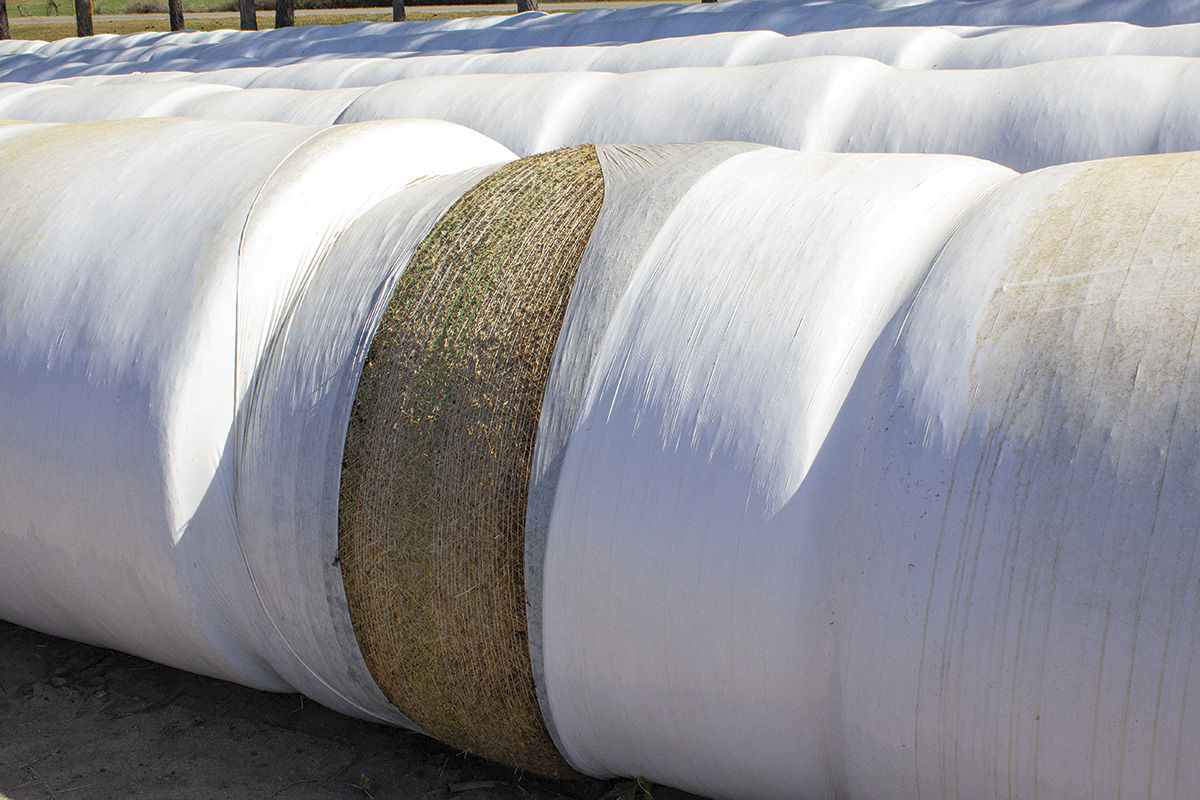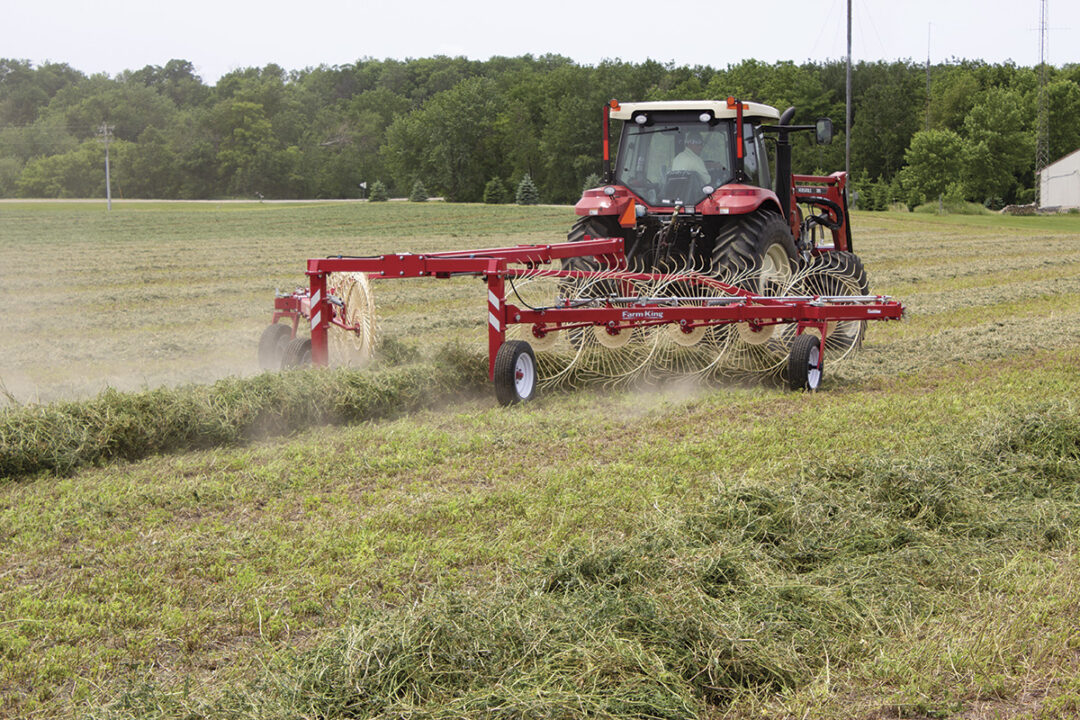Many farmers harvest forage one way and never consider alternatives. However, now with input costs and cattle value both at high levels, it might be worthwhile to consider some alternatives. Both energy and protein are more valuable than previously, and higher cattle prices indicate the greater value of higher calving percentage and more rapid weight gain.
Hay is dried to 15% moisture or less before baling and stored without mold growth due to its low moisture content. Haylage is chopped at 60% to 65% moisture and stored in piles or bunkers preserved by acidity and lack of oxygen. Baleage is harvested anywhere between 25% and 65% moisture and wrapped in plastic preserved by lack of oxygen and some acidity.
Assuming best management practices are used, haylage tends to have the highest quality and hay tends to be the least expensive per ton of feed, with baleage being somewhere in between on both accounts. Additionally, since haylage and baleage get forage off the field faster, there is potential for more regrowth and yield of the higher-priced forage than when hay is left to dry longer in the field.
Hay generally requires the least equipment investment, can be stored easily and weighs less per ton of dry matter, so it is less expensive to transport than baleage or haylage. However, since hay is often left on the field for five to 10 days, the chance of rain is high in some locations. Also, the next crop grows up around the drying windrows and yield of the next crop is reduced by shading from the windrow and wheel traffic from baling. Additionally, one of the reasons for the lower quality of hay is leaf loss during raking/merging and baling. This loss also reduces yield.

Staff photo.
Some ways to increase hay yield and quality are:
- Condition hay with a properly adjusted conditioner. Is the roller conditioner breaking stems every 2 to 4 inches (adjust both tension and spacing if not)? Is the flail/impeller conditioner scraping every stem?
- Put forage into a wide swath at cutting rather than a windrow (this will reduce drying time by at least one day and more in bright sunshine).
- Rake/merge and bale with some dew on the hay.
- Consider harvesting hay at 18% to 20% moisture and applying a preservative to improve leaf retention and elevate energy and protein of the forage.
Additionally, any of the above will get hay off the field faster, reducing rain damage and improving the yield of the next cutting. Some extra cost is justified due to the high cost of protein and energy supplements when the hay contains more of those components.
Haylage and baleage generally tend to be higher in energy and protein than hay due to greater leaf retention during harvesting. Haylage and baleage also have increased dry matter intake (DMI) and increased dry matter and organic matter digestibility, due in part to their higher moisture content and quicker wetting in the rumen.
In addition, with haylage or baleage there are fewer weather delays at harvest and faster harvest after mowing to enhance regrowth of the next cutting.
Haylage may not be available to farmers not currently feeding haylage due to equipment costs and the management of piles or bunkers that is required. (Though one might consider hiring a contract harvester, if available in the region.)

Staff photo.
Baleage is an option many should consider, at least for some of the forage. Bale-wrapping equipment is cheaper than a silage chopper. In many areas it may be possible to make bales with your current baler (though a silage baler has advantages) and then hire someone to wrap the bales.
Disadvantages of baleage include the need to wrap bales within the first 24 hours to minimize heating and quality loss, plastic maintenance (repair) if holes occur, plastic disposal and reduced ability to transport without proper equipment. Handling the plastic-wrapped bales requires different equipment than the classic bale spear or grapple to avoid tearing the wrapping and letting oxygen into the bale to start mold. However, a standard bale spear may be adequate for feeding bales of baleage wrapped in a long tube.
Again, keep in mind that baleage generally has a higher quality than hay and produces greater animal gains.
Baleage is ideal for horses. Because it has higher digestible energy content, it is appropriate for regular work horses, young horses with greater energy and nutritional requirements for growth, and even older horses who need a source of forage that’s easier to digest; but baleage is less ideal for overweight horses, horses prone to gaining weight, and metabolic and laminitic horses.
The biggest benefit of baleage over hay for many horse owners is that haylage is dust-free. Haylage can absorb spores that horses would otherwise inhale, since spores stick to the grass they're eaten instead of being breathed in.
The current economy presents many opportunities if we are willing to change to take advantage of current conditions. There is significant opportunity for economic growth in forage production if we are willing to meet the market.











